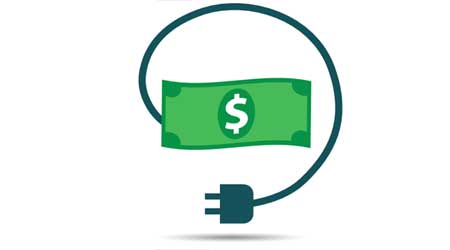For facility managers interested in shaving energy costs and use, the latest buzz centers around energy information systems (EIS), according to an article from Building Operating Management on the FacilitiesNet website.
For facility managers interested in shaving energy costs and use, the latest buzz centers around energy information systems (EIS). In the marketplace, EIS goes by many names. Facility managers are probably familiar with utility tracking systems, energy accounting systems, and energy dashboards, all of which are forms of energy information systems.
The U.S. Department of Energy’s Office of Energy Efficiency and Renewable Energy defines EIS as “the software, data acquisition hardware, and communication systems used to store, analyze, and display building energy data.”
Metering data is at the heart of an EIS. “At a minimum, an energy information system provides daily, hourly or sub-hourly interval meter data at the whole-building level, with graphical and analytical capability,” says Jessica Granderson, deputy for research programs in the Building Technology and Urban Systems Division of Lawrence Berkeley National Laboratory (LBNL). “The data is primarily acquired from whole-building electricity and gas meters, but can also include sub-meter and system-level data, depending on the depth of monitoring at the site.”
Some EIS tap the power of analytics to extract more value from energy data. “A more advanced EIS will be equipped with an analytics engine to provide insights on the stored real-time and historical data,” explains Chris Wilson, operations director, Energy+Eco, Environmental Systems Design, Inc. “Some common analytics provided are weather normalization to produce an accurate energy baseline or accurately predicting what future energy consumption will be.”

 How Efficiency Checklists Help Hospitals Save Energy, Water and Money
How Efficiency Checklists Help Hospitals Save Energy, Water and Money Designing with Heart: Seen Health Center Blends Cultural Warmth and Clinical Care
Designing with Heart: Seen Health Center Blends Cultural Warmth and Clinical Care Rutgers Health and University Hospital Breaks Ground on Campus Expansion
Rutgers Health and University Hospital Breaks Ground on Campus Expansion What to Consider When Modernizing Healthcare Facilities
What to Consider When Modernizing Healthcare Facilities Corewell Health Beaumont Troy Hospital to Build New Tower
Corewell Health Beaumont Troy Hospital to Build New Tower